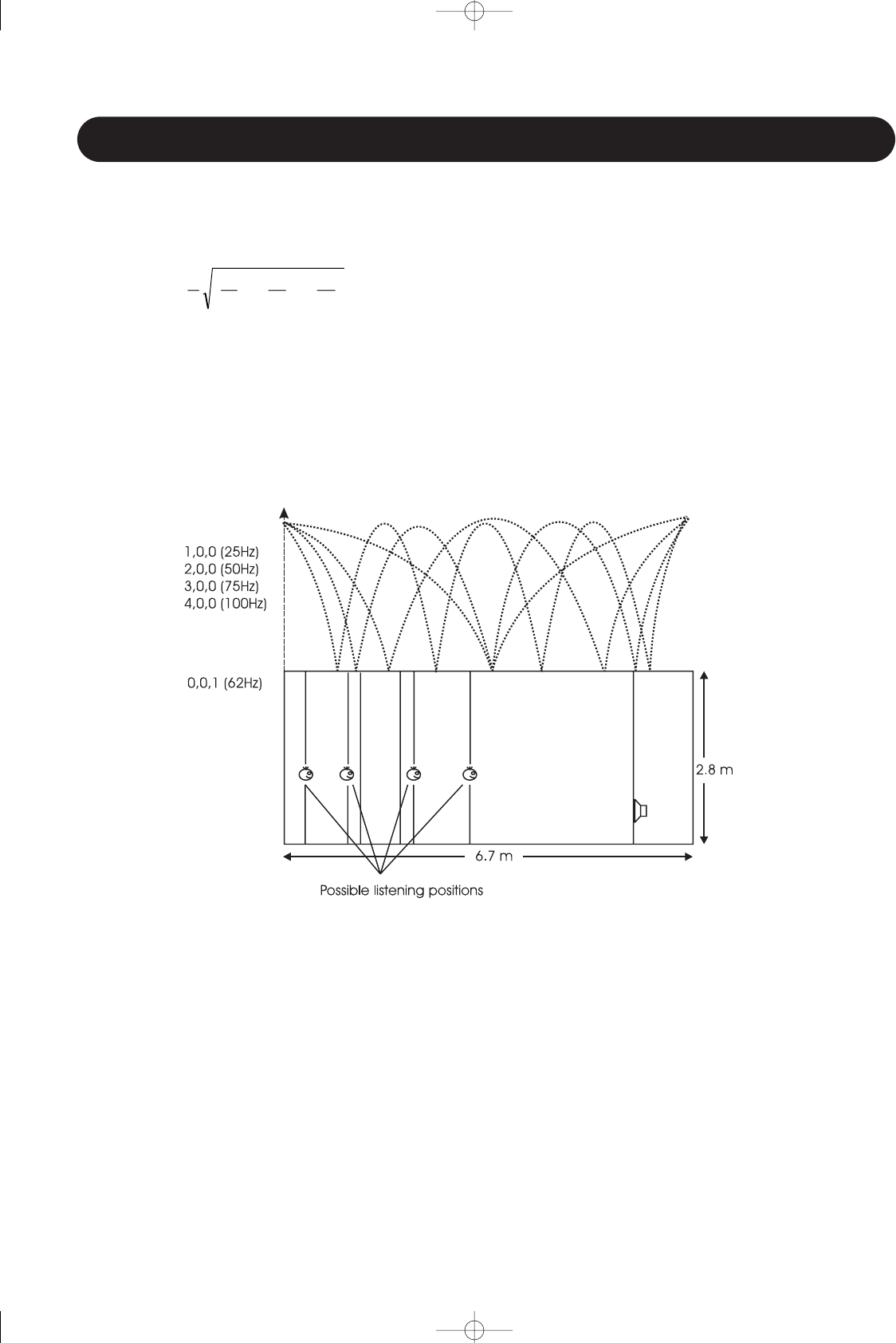
35
ACOUSTICS - BACKGROUND INFO
The standing waves are characterized by having a maximum sound pressure at the boundaries of the room. Depending
on the frequency there are one or more dips across the room.
In a box shaped room the frequencies can be calculated as follows:
where
f = frequency in Hz
c = speed of sound (approx. 340 m/s or 1130 ft/s)
l = length of the room
w = width of the room
h = height of the room
n = integer from 0 and up
How does the standing waves influence the sound
field?
The maxima of the standing waves are shown in the figure.
The curve expresses the area of the room where the actual
frequency is audible. At the minima the frequency is
represented at a much lower level (sometimes -40 dB
compared to the maximum).
If the room has the same dimensions as length, width, and
even height it is very problematic to obtain an even sound
distribution.
How to prohibit standing waves
Parallel walls in the room should be prevented. Then the
strongest modes are suppressed.
When placing the monitors it is important that as few
modes as possible are excited. This is why the monitors
should not be placed in a maximum of a standing wave.
When monitors are built into walls you should therefore be
concerned that the opposite wall is not parallel to the
monitor wall.
)
h
n
( + )
w
n
( + )
l
n
(
2
c
= f
hbl
Air_US_rev_111.qxd 16-12-2004 14:17 Page 35


















